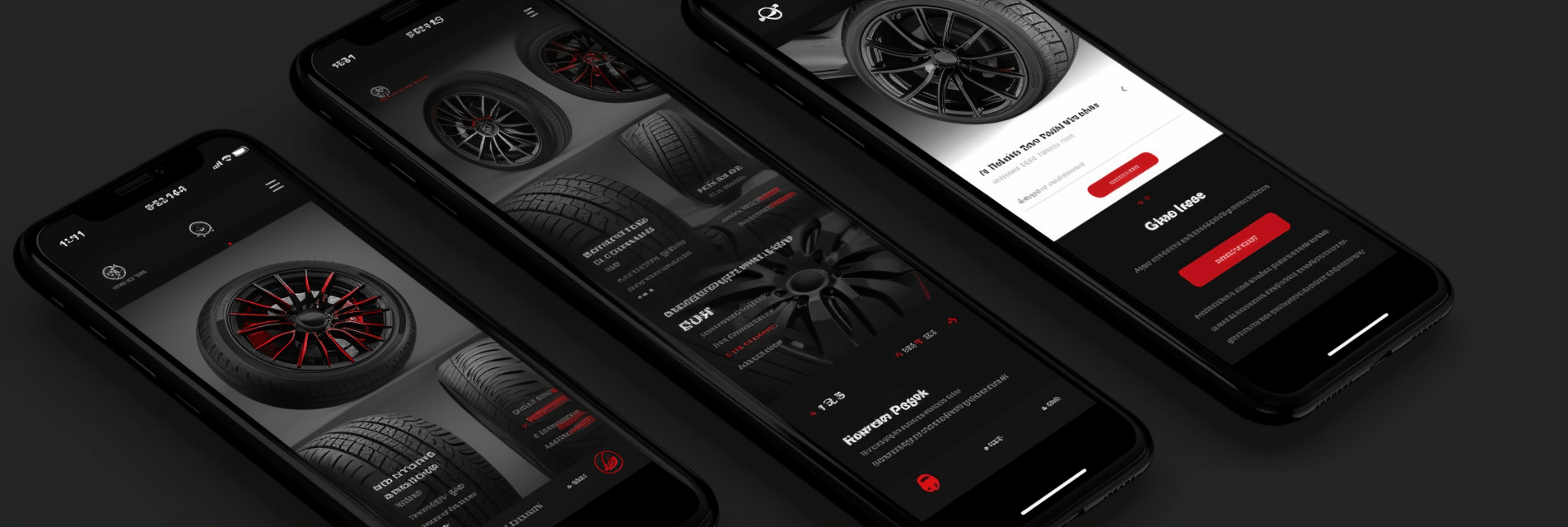As someone who’s been in the tire industry for quite some time, I’ve seen my fair share of negative reviews. It’s never easy to read harsh words from dissatisfied customers, especially when you’re passionate about providing quality products and services.
But here’s the thing: no business is perfect, and we all have room for improvement. The key to handling these unfavorable critiques lies not in ignoring them, but rather in embracing them as opportunities for growth and building stronger connections with our clientele.
In this article, we’ll be diving deep into the art of managing negative feedback within the tire industry. We’ll explore how to craft professional and empathetic responses that showcase your commitment to customer satisfaction while also learning valuable lessons from criticism.
Moreover, we’ll discuss strategies for encouraging positive reviews from satisfied customers and monitoring your online reputation. So let’s roll up our sleeves and get ready to transform those disheartening comments into fuel for a brighter future in our beloved industry!
The Importance of Addressing Customer Feedback

Imagine a customer rolling into your shop with a flat tire, only to leave with an ever-flatter impression of your business – that’s where addressing customer feedback comes into play.
In the tire industry, negative reviews can spread like wildfire and significantly impact your reputation. As a business owner, it’s crucial to take these reviews seriously and implement changes based on customer feedback.
Negative review prevention is all about being proactive in understanding the needs of our customers and making sure they feel valued.
Feedback implementation goes beyond simply responding to negative comments online. It involves analyzing patterns in the complaints received and identifying areas in which improvements can be made.
For instance, if multiple customers report long wait times or rude staff members, it may be time to reevaluate staffing levels or provide additional employee training. This approach not only helps address the root cause of dissatisfaction but also demonstrates that you genuinely care about your customers’ experiences.
Moreover, taking concrete steps to rectify issues brought up by customers fosters trust and loyalty among them while creating a sense of belonging within the community you serve.
By actively seeking out feedback and implementing necessary changes, you’ll cultivate an environment where customers feel heard and appreciated – ultimately leading to more positive reviews for your business down the road.
Remember that addressing customer feedback isn’t just about damage control; it’s an opportunity for growth and continuous improvement in providing exceptional service within the tire industry.
Crafting Professional and Empathetic Responses
In this section, we’ll guide you through the process of crafting responses to less-than-stellar feedback that are both professional and empathetic, ensuring your customers feel heard and valued.
Damage control is a crucial aspect of reputation management in the tire industry, as negative reviews can significantly influence potential customers’ decisions. To effectively address these concerns and maintain your business’s integrity, it’s essential to craft well-thought-out responses that demonstrate your commitment to customer satisfaction.
When composing a response to a negative review, begin by expressing gratitude for their feedback:
- Thank you for taking the time to share your experience.
- We appreciate your honest feedback.
Acknowledge their concerns and validate their feelings:
- We understand how frustrating it must have been for you.
- It’s disappointing to hear that our service didn’t meet your expectations.
Offer an apology and explain any steps taken or improvements made:
- We apologize for any inconvenience we may have caused you.
- Our team has since addressed this issue to prevent similar occurrences in the future.
To further enhance the authenticity of your response, be specific about the details mentioned in their review. Show empathy by putting yourself in their shoes, but avoid being overly emotional or defensive. Instead, remain solution-oriented and invite the reviewer to contact you directly if they would like additional assistance or support.
By doing so, you demonstrate genuine concern for their well-being while also providing an opportunity for potential resolution outside of public view. Your tire business thrives on trust and reliability; therefore, treating each customer with respect and understanding is vital.
When responding professionally and empathetically to negative reviews, remember that every interaction serves as an opportunity not only for learning but also growth within both personal relationships and brand reputation. With careful attention paid towards each individual’s needs—whether positive or critical—you’ll foster strong connections rooted in shared values that ultimately contribute toward long-term success within this competitive industry.
Learning from Criticism and Implementing Changes
It’s like striking gold when you take criticism to heart and use it as a catalyst for positive changes in your tire business! Negative review recovery is all about learning from the feedback, understanding the underlying issues, and making improvements. Criticism adaptation plays a vital role in transforming negative experiences into valuable lessons that can help you grow and thrive in the competitive tire industry.
| Steps to Implement Changes | Benefits of Change Implementation |
|---|---|
| Identify areas of improvement based on reviews | Enhanced customer satisfaction |
| Develop an action plan to address concerns | Increased sales and repeat customers |
| Monitor progress and continuously improve | Positive online reputation |
To create lasting positive impacts, start by identifying the areas of improvement mentioned in the negative reviews. Once you have a clear picture of what needs attention, develop an action plan that outlines specific steps to address these concerns. This may involve retraining staff, updating processes, or investing in new equipment. Be sure to monitor your progress regularly and make continuous improvements as needed. By addressing customer complaints head-on and embracing change, you’ll build a stronger foundation for success.
The power of belonging cannot be underestimated; people want to feel connected with businesses that understand their needs and are willing to go above-and-beyond for them. By learning from criticism and implementing changes accordingly, you show customers that their opinions truly matter – ultimately creating an environment where they belong. As more consumers feel heard and valued by your tire business, there’s no doubt it will lead to increased loyalty, word-of-mouth referrals, and long-term growth opportunities for your company. So let those negative reviews fuel your drive towards excellence; after all, every bit of feedback is an opportunity for growth!
Encouraging Positive Reviews from Satisfied Customers
You’re on the right track to success, so now let’s focus on encouraging those satisfied customers to share their positive experiences with your business!
Boosting testimonials and offering review incentives are two excellent strategies that can help you achieve this goal. By actively seeking out feedback from happy customers, you not only generate more positive reviews but also foster a sense of loyalty among them. This, in turn, will lead to increased customer satisfaction and ultimately contribute towards building a strong reputation for your tire business.
One way to encourage your clients to leave positive reviews is by making it incredibly easy for them. Offer multiple platforms for leaving feedback such as Google Reviews or Yelp, as well as social media channels like Facebook and Twitter. You could even have an integrated system on your website where customers can directly post their thoughts and experiences after purchasing tires from you.
Additionally, consider sending follow-up emails or text messages thanking them for their patronage and gently reminding them about the opportunity to share their experience online. Remember that people love feeling valued; if they feel appreciated by your tire company, they’ll likely be more inclined to share their satisfaction with others.
Another great tactic is offering incentives in exchange for honest reviews—regardless of whether they’re positive or negative—to motivate customers who might otherwise remain silent about their experience with your business. These incentives can include discounts on future purchases or exclusive offers available only through leaving a review.
But remember that these rewards should never be dependent upon the outcome of the feedback provided; instead, make it clear that all opinions are welcome and valuable in helping improve your services moving forward.
By embracing both positive and negative reviews while focusing on generating more glowing testimonials from satisfied clientele, you’ll create a welcoming environment where everyone feels heard—and most importantly—valued within the community surrounding your tire business.
Monitoring and Analyzing Online Reputation
Keeping tabs on your online reputation is crucial for staying ahead in the competitive world of tire sales and ensuring your customers remain satisfied. Online monitoring and reputation management are vital components of any successful marketing strategy, as they allow businesses to track customer feedback, identify areas for improvement, and maintain a positive brand image.
By consistently monitoring review sites, social media platforms, and search engine results—among other digital channels—I can gain valuable insights into how my tire business is perceived by consumers and make the necessary adjustments to better serve their needs. To successfully analyze my online reputation, I must first establish a system that allows me to efficiently monitor these channels.
This may involve setting up Google Alerts or using specialized software such as Hootsuite or Mention to receive notifications when my business is mentioned online. These tools enable me to quickly respond to customer inquiries or negative reviews while proactively addressing any potential issues before they escalate. Additionally, tracking industry-specific websites like Tire Review World Tire Report can help me stay informed about the latest trends in consumer preferences and adjust my offerings accordingly.
By regularly analyzing this data, I can identify patterns in customer feedback that highlight specific areas where my tire business excels or falls short. For example, if multiple customers complain about long wait times at my store locations, it might be time for me to invest in additional staff members or implement more efficient inventory systems. Similarly, if many positive reviews mention exceptional customer service experiences with particular employees, I could consider rewarding them with incentives or promotions as a way of encouraging continued excellence.
Ultimately, monitoring and analyzing my online reputation enables me to continuously adapt and improve both the products I offer and the experience I provide for each customer who walks through my doors—an essential ingredient for success in today’s ever-evolving tire industry.
Frequently Asked Questions
How can I identify fake negative reviews and what actions can I take against them?
As an expert in the tire industry, I’ve honed my skills in identifying patterns and flagging fraudsters who post fake negative reviews.
To detect these deceitful comments, I analyze factors such as the reviewer’s account history, language used, and any repetitive phrases or themes across multiple reviews.
It’s essential to stay vigilant against these dishonest tactics since they can tarnish our industry’s reputation and hinder genuine customers from making informed decisions.
By taking necessary actions like reporting suspicious reviews and encouraging authentic feedback from satisfied clients, we create a sense of belonging within our community where everyone benefits from fair competition and honest evaluations.
What strategies can be implemented to prevent negative reviews from affecting my tire business’s sales?
Like a strong, dependable tire that carries us safely on the road to success, preventing negative reviews from affecting my tire business’s sales requires a smart strategy and unwavering commitment.
By offering unbeatable tire warranties and continuously improving our online presence, I can create an environment where trust and customer satisfaction are at the forefront.
It’s essential to be knowledgeable about industry trends, analyze competitors’ tactics, and adapt accordingly in order to maintain an edge in this competitive market.
Engaging with customers through various channels not only helps address their concerns but also fosters a sense of belonging within our community – which ultimately drives brand loyalty and keeps those sales rolling in.
How can I encourage customers to reach out directly to my business with their concerns, rather than leaving negative online reviews?
I’ve found that fostering direct communication with my customers is a game changer when it comes to addressing their concerns and limiting negative online reviews.
One way I achieve this is by offering review incentives, such as discounts or special promotions, to those who provide feedback directly to my business. This not only encourages customers to reach out with their issues, but also allows me the opportunity to turn a potentially negative situation into a positive one – all while building stronger relationships with my clientele.
By actively engaging and creating a sense of belonging among my customers, I’m able to maintain an open dialogue and consistently improve the overall experience they have with my products and services.
Are there specific platforms or websites where I should focus my efforts in addressing negative reviews in the tire industry?
Navigating the Wild West of tire review platforms can be daunting, but fear not, I’ve got the perfect strategy for damage control.
First things first, concentrate on the big guns like Google Reviews and Yelp. They have a wide reach and are frequented by potential customers.
Don’t forget to monitor industry-specific platforms such as Tire Review Center or Tire Business Reviews for addressing concerns specific to our niche.
The key is to respond promptly to negative feedback with empathy and professionalism while offering solutions. This shows other readers that we value their opinions and strive for their satisfaction.
By actively engaging in these online communities, we create a sense of belonging where both new and loyal customers feel heard and appreciated – an invaluable asset in today’s competitive market.
How can I train my employees to handle customer complaints effectively and reduce the chances of negative reviews?
As a business owner, I recognize the importance of employee empowerment and complaint resolution in reducing the chances of negative reviews.
To train my team effectively, I focus on creating an open, supportive environment where employees feel comfortable addressing customer concerns head-on. This includes providing them with the tools and resources they need to problem-solve efficiently while ensuring they understand our company values and commitment to excellent service.
Encouraging active listening, empathy, and clear communication helps build trust between staff and customers, fostering a sense of belonging for everyone involved.
By investing in comprehensive training programs that emphasize these principles, I’m confident that my employees will be well-equipped to handle customer complaints professionally and turn potentially negative experiences into positive outcomes.
Conclusion
In conclusion, I understand that it’s tough to accept negative feedback in the tire industry. However, addressing these concerns and turning them into opportunities for improvement is crucial in this competitive market.
By focusing on crafting empathetic responses and learning from criticism, we can strive to provide better services for our customers.
Embrace the negativity as a chance to grow and create a business that stands out above the rest.

